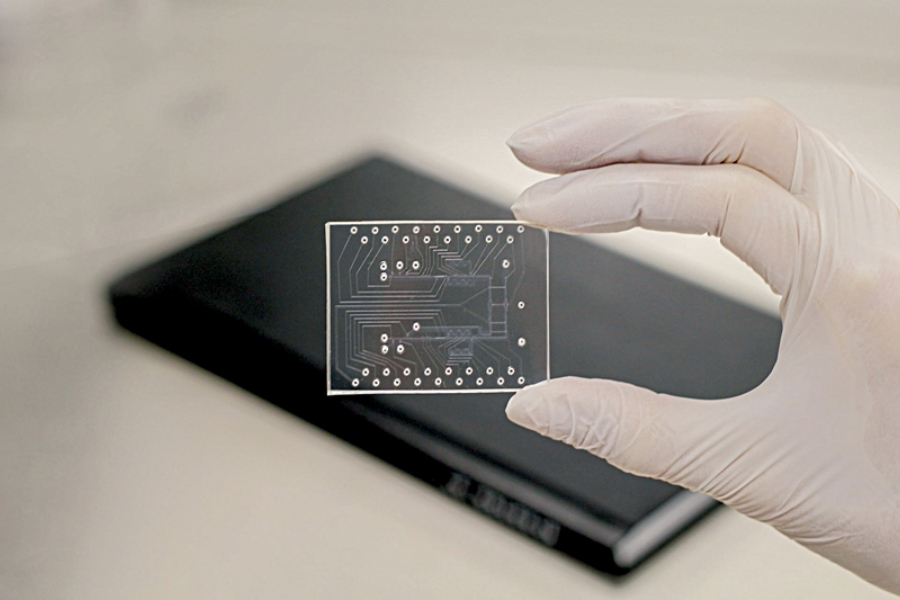MEMS and Microfluidics for cancer diagnostics
Cancer diagnostics have seen significant advancements in recent years, thanks to cutting-edge technologies like Micro-Electro-Mechanical Systems (MEMS) and microfluidics. These innovative tools have transformed the landscape of cancer detection, making it faster, more accurate, and less invasive. In this blog, we will explore how MEMS and microfluidics are changing the game in cancer diagnostics.
Understanding MEMS and Microfluidics
Micro-electro-mechanical systems (MEMS) are tiny devices that combine mechanical and electrical components on a microscale. Microfluidics, on the other hand, is the science of manipulating small amounts of fluids within microchannels or tiny channels. When these two technologies come together, they form a powerful combination that can revolutionize cancer diagnostics.
Early Detection
One of the critical aspects of fighting cancer is early detection. MEMS and microfluidics enable the development of highly sensitive and specific diagnostic tools. By analyzing minuscule amounts of blood, urine, or tissue samples, these technologies can detect cancer biomarkers at a much earlier stage than traditional methods.
Precision and Personalization
Cancer is not a one-size-fits-all disease. MEMS and microfluidics allow for the precise analysis of a patient’s specific cancer profile. This data can then be used to tailor treatment plans, choosing the most effective therapies while minimizing side effects.
Non-Invasive Testing
Traditionally, cancer diagnosis involves invasive procedures such as biopsies. With microfluidic devices, a simple blood test or urine sample can provide vital information about the presence of cancer cells or biomarkers. This reduces patient discomfort and the risk of infection.
Monitoring Disease Progression
MEMS and microfluidics are not only valuable in the initial diagnosis but also in monitoring the progression of the disease. They can detect changes in biomarker levels, tumor growth, and treatment response over time, enabling doctors to adjust treatment plans accordingly.
Point-of-Care Testing
The portability and ease of use of MEMS and microfluidic devices make them ideal for point-of-care testing. Doctors can perform diagnostic tests in their clinics, which significantly reduces waiting times and accelerates treatment initiation.
Applications in Cancer Diagnostics
MEMS and microfluidics have found applications in various aspects of cancer diagnostics
Liquid Biopsies: These involve testing for cancer-related biomarkers in bodily fluids, providing a less invasive and more accessible alternative to traditional biopsies.
Tumor Profiling: Microfluidic devices can analyze tumor tissue to determine its genetic characteristics, helping oncologists select the most effective treatment.
Drug Sensitivity Testing: Microfluidics allow for testing how individual patients will respond to specific cancer drugs, reducing the trial-and-error approach to cancer treatment.
Circulating Tumor Cells (CTCs): MEMS and microfluidics can isolate and analyze CTCs, providing insights into cancer metastasis and treatment effectiveness.
Exosome Analysis: Exosomes, tiny vesicles released by cancer cells, can be analyzed to gain valuable information about cancer progression.
The role of MEMS and microfluidics in cancer diagnostics
High Throughput Screening: MEMS and microfluidic devices can rapidly process large numbers of samples, making them ideal for population-based screening and early cancer detection efforts. This scalability is crucial in regions with a high burden of cancer.
Minimal Sample Volume: These technologies require only a tiny volume of sample, which is especially beneficial in cases where obtaining large samples is challenging, such as pediatric cancer patients or individuals with limited blood volume.
Reduced Cost: Miniaturization and the use of fewer reagents contribute to cost savings in diagnostic procedures. This can make cancer diagnostics more affordable and accessible, particularly in Resource-limited settings.
Real-time Monitoring: Microfluidic devices with integrated sensors can provide real-time data, allowing oncologists to closely monitor a patient’s response to treatment and make rapid adjustments if needed.
Biomarker Discovery: MEMS and microfluidics are instrumental in the discovery of novel cancer biomarkers. By analyzing samples at the microscale, researchers can identify new molecules associated with cancer, leading to improved diagnostic and therapeutic options.
Liquid Biopsy for Multiple Cancer Types: These technologies can be adapted to detect a wide range of cancer types. Liquid biopsy-based tests can simultaneously screen for multiple cancers, providing a more comprehensive approach to cancer diagnostics.
Predictive Analytics: MEMS and microfluidics can generate large datasets. Machine learning and artificial intelligence techniques can analyze this data to predict disease progression, therapeutic responses, and patient outcomes more accurately.
Global Health Impact: The portability and ease of use of microfluidic devices make them valuable tools in global health initiatives, where access to advanced diagnostics is limited. They can facilitate early cancer detection and reduce cancer-related mortality in underserved populations.
Future Possibilities: Researchers are continually exploring new applications for MEMS and microfluidics in cancer diagnostics, such as the detection of rare mutations, immune system profiling, and point-of-care cancer staging.
Integration with Telemedicine: MEMS and microfluidics can be integrated with telemedicine platforms, allowing patients in remote areas to have their samples tested and receive consultations with oncologists without the need for extensive travel.
Challenges and Future Directions
While MEMS and microfluidics hold immense promise in cancer diagnostics, there are still challenges to overcome. Miniaturization and mass production of these devices can be costly, and their clinical implementation may require regulatory approvals. However, the potential benefits are enormous. As technology advances, we can expect even more accurate, accessible, and non-invasive methods for cancer detection and monitoring. MEMS and microfluidics are at the forefront of this exciting revolution, offering hope to patients and healthcare professionals alike.
MEMS and microfluidics are transforming the field of cancer diagnostics. By enabling early detection, personalization of treatment, and non-invasive testing, they offer a brighter future for cancer patients. As these technologies continue to evolve, we can anticipate a world where cancer is diagnosed and treated with greater precision, reducing the burden of this formidable disease on individuals and society.
Source

